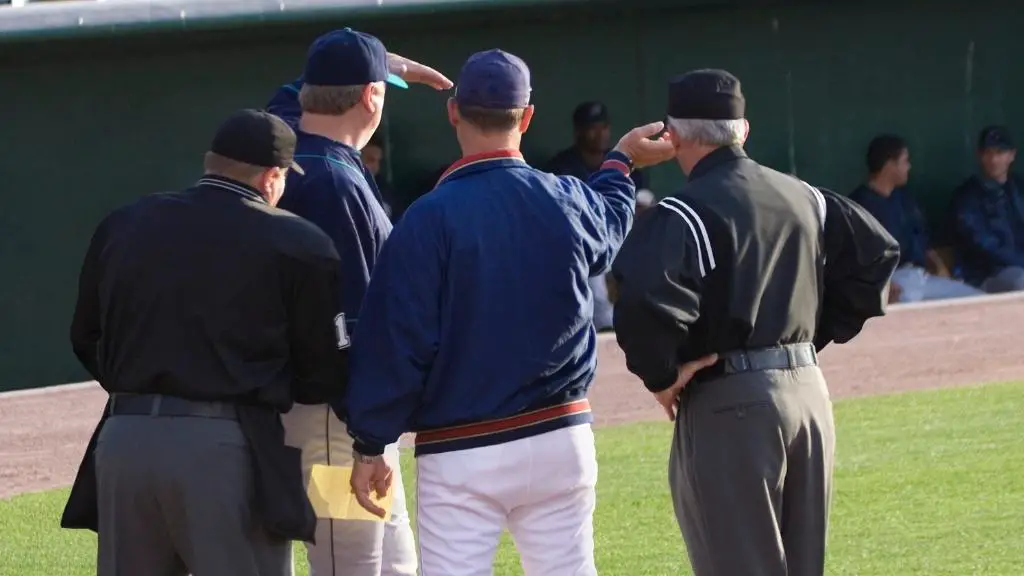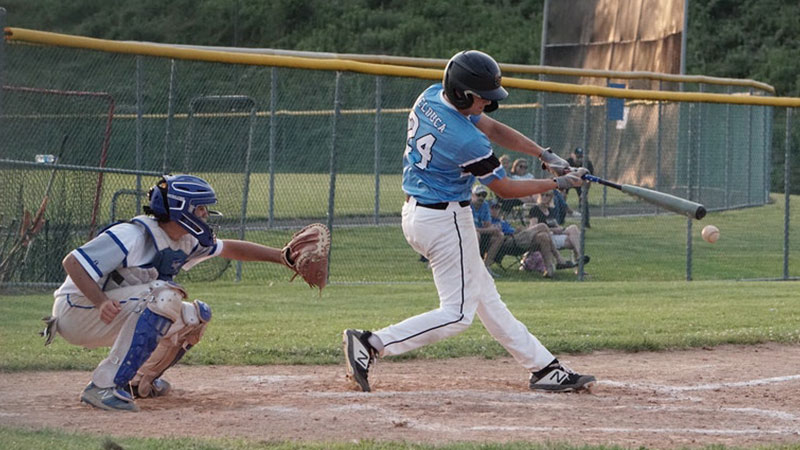Many avid baseball fans often wonder about the meaning of the MVR stat and what it represents in the game. To satisfy their curiosity, this article aims to shed light on the concept of MVR in baseball. MVR stands for Mound Visits Remaining, which refers to the count of visits to the pitcher’s mound that each team is allowed during a game. Understanding this term is essential for comprehending the strategic and tactical aspects of baseball.
In 2018, Major League Baseball introduced the MVR rule to reduce the frequency of mound visits and increase the speed of nine-inning games. These visits to the pitcher’s mound carry great importance for both teams as they offer a chance to strategize and devise a game plan to outsmart the upcoming batter. Understanding the significance of these visits highlights their crucial role in influencing the outcome of individual plays and the overall flow of the game.
How Do Mound Visits Work
In the game of baseball, mound visits hold significant weight as they have the power to influence the outcome of a match. Let’s take a deeper dive into how mound visits work and the role of MVR (Mound Visits Remaining) in baseball games:

- Mound visits occur when coaches, managers, or players go to the pitcher’s mound to have conversations with the pitcher. These visits serve various purposes, such as discussing strategies, offering support and guidance, or addressing any concerns that may arise during the game. Typically, the catcher or infielders signal the need for a mound visit, which prompts the manager or coach to seek permission from the umpire.
- When a mound visit takes place in baseball, players gather to have important discussions that cover a range of topics. They collaborate on strategies to guide the pitcher in approaching the upcoming batter, offering suggestions to enhance pitching techniques and exploring critical aspects of the game.
- In baseball, mound visits are subject to a time limit to maintain the game’s pace. Typically, a mound visit should wrap up within 30 seconds or less. However, if the visit exceeds this duration, an umpire intervenes to bring it to a close. This intervention is crucial to keep the game on schedule and avoid unnecessary delays.
- In 2018, Major League Baseball introduced the MVR (Mound Visits Remaining) concept to reduce disruptions in games. Initially, teams are limited to 5 mound visits during regular game duration. However, in extra innings, both teams receive an extra visit. This rule promotes fair strategic discussions while maintaining gameplay efficiency.
What Are Mound Visits Remaining In Baseball?
In 2018, Major League Baseball introduced a new rule on mound visits. Each team is now limited to a maximum of 5 visits per game, preventing them from exceeding this set limit. The rule aims to maintain game pace, minimize interruptions, and strike a balance between strategic discussions at the pitcher’s mound and continuous gameplay.
Scoreboards now feature an MVR column, which stands for Mound Visits Remaining. It informs spectators about the remaining number of visits the pitching team can make to the mound, keeping them aware of strategic opportunities during the game.
On a baseball scoreboard, the MVR column is positioned next to the R/H/E box, which stands for Runs/Hits/Errors. This box displays the total runs, hits, and errors for each team, offering a concise summary of the game’s developments.
Purposes Of The Five Mound Visits Policy
The goal of this policy is to prevent teams from intentionally slowing down the game’s pace. Baseball thrives on its energetic tempo, captivating fans’ attention. Minimizing delays and breaks keeps the game engaging, ensuring fans remain invested and excited, while preserving baseball’s dynamic nature.
Baseball has seen a decline in its audience over the years due, in part, to its slower pace compared to other fast-paced sports. Extended mound visits, occasionally lasting over 5 minutes during pitching changes, contributed to this issue. However, the implementation of the policy to limit mound visits has been a positive step for baseball. By reducing visit durations, the game becomes more dynamic, engaging fans and reigniting interest. This policy has played a significant role in revitalizing baseball’s appeal for both existing and potential fans.
How Many Visits Per Game Until Now?
History Of MVR In Baseball

Teams in baseball are currently limited in the number of mound visits they can make during a game, with a maximum of 5 allowed. However, if the game goes into extra innings, both teams receive an additional mound visit. This adjustment ensures a fair chance for strategic discussions, acknowledging the unique circumstances of extended play while still upholding the overall limit on mound visits.
- Before 2018, baseball had no restrictions on mound visits, resulting in a slower game pace as players frequently sought visits.
- Games became longer than expected, impacting the overall excitement. To address this.
- Major League Baseball (MLB) introduced the Five Mound Visits Policy in 2018
- Aiming for a faster and more engaging experience for players and fans.
Currently, coaches have the privilege of making one mound visit per inning and one visit per pitcher as per the rules. However, if there is a substitute pitcher, the coaching staff can make two visits. These visits are time-constrained, with a strict limit of 30 seconds. If the discussion exceeds this duration, umpires intervene to conclude the meeting and keep the game flowing smoothly. These regulations strike a balance between maintaining the game’s pace and allowing crucial strategic discussions on the pitcher’s mound.
Are There Exceptions To Mound Visits?
Exceptions exist for visits to the mound in certain cases. If a coach visits the mound twice within a single inning, they must remove the pitcher from the game. This rule prevents excessive interruptions and encourages strategic decision-making by the coaching staff.
However, if a coach initiates a visit after a player has already visited the mound in the same inning, it counts as two visits in total. However, the coach is only responsible for one of them, and the pitcher does not need to be removed from the game. This exception provides flexibility while ensuring fairness in the rules.
A mound visit is permitted right after an offensive substitution, such as bringing in a pinch hitter. In this case, any subsequent visit will not be counted towards the team’s total visits. This exception acknowledges that offensive substitutions can alter the game dynamics and allows for strategic discussions without incurring an extra mound visit penalty.
Does Pitching Change Count As Mound Visit?
To bring in a substitute pitcher, the coach simply needs to step off the mound, inform the umpire of the change, and return with the new pitcher.
In this case, although the coach visits the mound twice, it is counted as a single visit. The consecutive visits by the coach are treated as one collective visit, recognizing their presence without imposing multiple penalties on the team.
FAQs
What Is A Mound Visit?
A mound visit in baseball occurs when players, accompanied by their coach, pause the game to discuss game strategies. It’s a crucial moment for collaboration, decision-making, and aligning the team’s approach for success.
If There Are Too Many Mound Visits, So There Is Penalty Or Not?
Excessive mound visits in baseball do not typically result in severe penalties. While umpires can prevent coaches from walking onto the field for a mound visit, players still have the option to call time and visit the mound, which counts as a visit.
- If a team exceeds the limit of 5 visits, the umpire will direct the player back to their position.
- Failure to comply within a reasonable time may lead to the player’s ejection, although such occurrences are infrequent since teams are usually aware of the visit limit.
- If a coach makes two mound visits in a single inning, the pitcher is required to be replaced.
What Happens In Extra Innings?
When a baseball game goes into extra innings, teams get an extra chance to talk to the pitcher on the mound. In each extra inning, both teams are allowed one additional visit to the mound. So, if the game reaches the 10th inning, for example, each team can have one extra meeting with the pitcher. They can either use it immediately or save it for later in case the game goes even longer.
Conclusion:
In baseball, MVR stands for Most Valuable Runner. It’s a special title given to the player who makes a significant impact on their team’s success by advancing or scoring crucial runs. The MVR is selected based on their exceptional performance and influence during a particular game or series. This recognition underscores the value of strong base running skills and the ability to make game-changing plays. Awarding the MVR designation is a meaningful way to honor players who contribute significantly to their team’s success on the basepaths.
